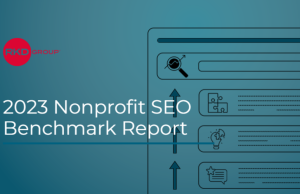It’s that time of year again, Giving Tuesday campaigns and end of year appeals, holiday vacations and critical service delivery. There is also the planning for what the next year might bring. This is also the time of year when talking about trends that might or, what’s more likely, might not happen, is a common practice in every industry.
What’s to come for technology? Before we talk about 2020, what was said about 2019? The Tech Trends for 2019 from Deloitte highlighted artificial intelligence, cybersecurity, blockchain, 5G service and more. From where I sit, I don’t see nonprofits on the whole or even nonprofits on average participating in these trends. Yes, there are some — but not enough to say that was a trend in 2019 and something new is coming along in 2020. Most nonprofits aren’t actually ready to be part of these trends today.

Instead of talking about the trends for 2020, get your organization’s technology plans and systems in a stronger place with this new year’s resolution list.
Clean up your passwords
Let’s start with the very basics here. Block an hour on your calendar and change the passwords for all of those accounts where you use the same password. With more than 8 million passwords stolen every day, this is the first step to protect yourself and your organization. And maybe you don’t use the same password everywhere, but are your passwords “admin,” “password” or your name? Yeah, that doesn’t cut it either.
PCMag says a strong password is one “that is hard to detect both by humans and by the computer. Two things make a password stronger: (1) a larger number of characters, and (2) mixing numeric digits, upper and lower case letters and special characters ($, #, etc.)” Many systems rerequire a minimum number but that doesn’t mean that’s the recommended length. Consider 12 characters to be a minimum for a strong password.
Roll out a password manager
One of the easiest ways to ensure you have strong passwords on every account is to use a password management application. Using a tool like LastPass enables you to generate strong passwords, save them in the cloud where you can access them from any computer or device, and to share them securely. You can even set up a password manager for your whole organization — enabling staff to share access to accounts without actually sharing passwords. That means that everyone on the communications team, for example, could log into the Flickr account where you store event photos but none of them would actually see the password or be able to change it.
When a staff person leaves the organization, removing access from systems is so much faster and easier with a password manager in place, too.
Set up two-factor
And while you’re getting so much in place for your passwords, enable two-factor authentication on critical systems like your email and your database. Two-factor means that in addition to your password, you’ll be prompted to provide a second unique code, often provided via text message, email, or an application. This provides strong protection for your accounts and helps protect your systems from basic vulnerabilities.
Depending on the systems you use at your organization, administrative settings may be in place to require all users enable two-factor, like in the admin settings for your database.
Schedule security trainings for your staff
The first three resolutions here focus on the very basics of security for good reason. Organizational security is something that needs to include everyone in the organization.
In NTEN’s “State of Cybersecurity Report,” 59 percent of organizations responded that they do not provide any cybersecurity training to staff. If staff do not receive training, guidelines, or support to navigate all of their systems in a secure way, your organization can expect it is only a matter of time before there’s a real issue with data, social media, your website, or something else. Get regularly occurring technology trainings on the calendar for all staff — whether they are part of existing staff meetings or not. Technology changes all the time and training needs to be ongoing for staff to benefit.
Create technology policies
What do you include in security trainings? Start by creating policies for the organization’s tech use and designing trainings that match the policies. Use the first three resolutions here and make a password policy, then train staff on it and check in throughout the year about challenges, questions, use cases, and so on.
Create a policy for how staff access and use organizational accounts when not physically in the office. Ask staff what technology decisions or needs they have that don’t have clear guidelines, and use that list to prioritize the policies to create this year.
Check your website analytics
In last year’s “NTEN Digital Adoption” report, nearly 40 percent of nonprofit respondents said they don’t actually track the adoption rate of their online programs. If you aren’t looking at your website analytics regularly, it’s likely that adoption rate for online programs isn’t the only thing your organization isn’t tracking.
Website analytics are easy to set up with free Google Analytics being the most common tool non-profits use. Even though it is free, it has an incredible amount of information that you can use to both learn about your supporters and make decisions about your online presence, content, and communications.
Once you are in the habit of checking your analytics, start designing tests to see what you can improve. Change the call to action on a page or the layout of content to see if it changes conversion rate, for example. Use the data you gather from what folks are searching about to find your site, or searching within your site, to improve your navigation and content labels.

Get rid of all the bad emails
In so many ways, nonprofits are regularly being told that having more people on our list is valuable. More people should mean more donors and more event registrants and more advocacy actions, right?
Unfortunately, there’s a limit to what you can assume you’ll achieve just because of the numbers. A smaller list that includes only those who truly are engaged and want to hear from you (and do what you ask of them when they do hear from you) is always going to be better than a list with a lot of folks who don’t open your emails.
Start the new year with a cleaned up list by removing the emails that bounce and that haven’t opened or clicked on anything you’ve sent them. Whatever email marketing tool you are using includes tracking on opens and click-throughs so you can do this kind of pruning.
Make a list that is only of the folks you are considering removing and send them a final message. This could be a place for you to show some of the organization’s personality — that explains their email will be removed and you are sorry to see them go, and includes an option for how to stay on the list if they really do want to stay (“click the link below to stay with us!”). And once they’ve had their chance to stay, do what you need to mourn and hit delete.
Budget for professional development
Professional development can mean many things to staff on different teams or at varying points in their careers. In NTEN’s “2019 State of Nonprofit Professional Development” report, only 39 percent of respondents confirmed that professional development budget is available to everyone on staff. And, 91 percent said they would want to see professional development was available when considering a job.
Staff are looking for it, but once hired aren’t seeing it. During more than a decade of research, NTEN has heard consistently that staff have the tools they need to do their job but not the training to actually use them.
Training has already been on this resolution list, but this resolution challenges you to put budget aside for every staff person to benefit from the conferences, trainings, online courses, coaching, memberships, or leadership programs that are right for them. Staff are your biggest resource, and everything you invest in their growth and potential will have returns for your organization.
Get ready for the census
The 2020 census is almost here and it will impact all of us. Every person counted in the census from the communities you serve will influence funding for the next decade. It will impact the way Congressional districts are drawn and how you may be represented. And, the census has historically missed many of the important communities your organization might serve, including communities of color, children, those with low-income wages, and others, also impacting both political representation and the decisions about resource allocation.
In 2020, for the first time, the census will be digital so people will receive a letter that includes directions for completing the census questionnaire online. Every organization needs to be part of supporting the most inclusive census possible. You can get resources from Nonprofit Vote and contact your local municipal offices to ask how you can partner with them to ensure a fair and accurate census 2020 count in your community.
This probably is a longer list than you had planned for your New Year’s resolutions this year. And, that’s okay. No matter what your mission, how large or small your budget or your staff, or what you have planned for technology next year, there’s something on this list that needs your attention.
All of these resolutions ultimately amount to one big resolution for next year: to get your organization ready for 2021 to be the year you are part of the big trends and opportunities coming to the sector. Make 2020 the year your organization invests in technology changes that position you for both security and effectiveness.
Start by changing your passwords.
Amy Sample Ward is chief executive officer of NTEN in Portland, Ore. Her email is [email protected]












